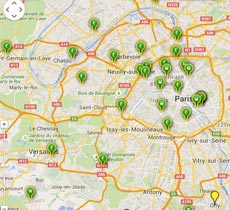In preparation for your off-road adventure in Zimbabwe, here are some tips we have prepared for you!
1. Make sure you know your vehicle well. It's important to recognize your limits and those of your vehicle and not to exceed them.
- Know how your 4x4 system works, how to use the controls & where the vehicle manual is located
- Know where the spare tire and jack are located and how to use them.
- Know where the lowest point of clearance is - usually the differential casing.
- Get used to driving your 4x4. Get a feel for its size and driving characteristics.
- Practice using the low ratio gearbox.
- If your vehicle is equipped with manual locking hubs, try them out.
- Know where your engine's air intake and engine computer are located so you'll know the maximum depth of water that you could cross. Never Cross a Flooded Bridge or River.
- Keep track of your vehicles maintenance for extended rentals and always check regularly the condition of filters, belts and hoses and keep all fluids topped up throughout your trip.
2. Be prepared. You never know when you'll find yourself stuck or broken down, without help around, so be sure to pack all of the appropriate "emergency" supplies such as extra drinking water - it may take a few hours for Europcar to reach you in the remote parts of our country.
- And be aware of changing weather conditions before you head out on a trip - a flooded river bed may be impassable on a return trip after heavy rain.
3. Travel with at least one passenger, and at least one other vehicle whenever possible.
4. Let someone know where you are going, and set a time to contact them to let them know you are okay. Don't forget to take along their phone number! Don't forget to carry Europcar's emergency phone number especially if you leave the vehicle.
5. Before leaving civilization, do a complete check of your vehicle before leaving.
6. Pay attention to how you load your vehicle. Loads should be distributed evenly within the vehicle if possible. Loads behind the rear axle will sag the rear of the vehicle, limiting your departure angle and clearance. Excessive loads will change the centre-of-gravity, thus making the vehicle less stable.
7. Always know where you are, where you're going, and which route you intend to take. Be time-conscious... What may look like a short trip on the map may take many hours in 4-wheel drive -- so allow enough time for safe travel.
Be sure to follow these "Rules of the off-road" when you're out enjoying beautiful Zimbabwe!
- Environment
Be aware of the damage you and your vehicle can do to the environment.
- Trails
Don't leave any road. Instead, stay on the established road or track. Otherwise: If you venture off the road into the bush, you may get lost in an area where no one will be able to find you.
- Your heavy 4 x 4 Twin Cab will damage the ground and embankments by leaving ruts that will deepen and erode with each passing rain.
- You will be damaging the surrounding plant and animal life.
- You may do damage your 4 x 4 vehicle.
- You will face a serious fine from National Parks law officials and could be removed from the park.
- Trash
Don't litter - not even a cigarette butt or a candy wrapper. If you pack it in, pack it out. - Spinning
Don't spin your tires and tear up the soil - it breaks the surface crust and leads to erosion when it rains. - Rocks
Should you need to pile stones up to get over an obstacle, then be sure to put the stones back where you found them afterwards. - Tricks
Leave your ego at home. Every vehicle (and driver, for that matter) has its limitations. Backing off early and accepting that a maneuver is impossible or choosing another approach may prevent vehicle damage and, more important, personal injury. Never try a maneuver that you are uncomfortable with. - Wildlife
Don't disturb the wildlife; this includes plants and animals. We're treading on their turf! - Speed
Slow down. Enjoy the scenery. Live the experience to the fullest. You don't want to spend time repairing & paying for damage you wouldn't have caused had you driven a little slower.
What To Do If You Get Stuck Off Road
. Here's what to do if you stall, get stuck, or break down.
- If you stall
If your vehicle is about to stall on steep incline or decline, DO NOT depress the clutch! This could cause the vehicle to "free wheel" and you could loose control very quickly.
Instead, first turn off the ignition and apply the food brake very hard. Then apply the parking brake. After selecting a suitable route back down the hill, slowly depress the clutch, put it in reverse, let the clutch out, and simultaneously release the parking brake and the foot brake slowly. Then start the engine. With an automatic transmission, never shift the gear lever to Park, as this may lock the transmission and you may not be able to release it without the aid of a winch.
If you get stuck
If you get stuck on a rock, stump or log, survey the situation first to determine the best way to free the vehicle without damaging it. If you're stuck on an object that can be moved, jack up the vehicle and clear away the obstacle. If you're stuck on an object that can't be moved, jack up the vehicle and fill under the tires so that you can drive over the obstacle.
Try letting some of the air out of your tires (to about 10psi) -- just remember to air them up again as soon as you can. (Remember that lowering tire pressure also reduces the vehicle's overall height and therefore the vehicle's ground clearance.) Lock the differential locks (if fitted), and use as high a gear as possible.
After shoveling away the mud, dirt, or sand clear a path in the direction you'll be traveling, so the tires can get enough traction. Carpet strips, wood, floor mats, brush, rocks, clothing or sleeping bags can be placed as traction aids under the tires in the direction of travel.
If you still can't get out, jack up the vehicle and fill the area under the tires with sand, rocks, logs, brush, packed snow or any combination of these. If the jack sinks into the ground, use piece of wood as a base. (Never crawl under a vehicle that is supported by a jack!)
- If you can't drive out safely
It's important that you stay with your vehicle, and find a way to make yourself visible to others.
Keep calm -- don't panic and don't waste time and effort wondering "what if?" ("If only I hadn't done that!").
Spend your time constructively. Think through all your options. Take stock of your supplies and situation.
If help doesn't come in a reasonable amount of time, and you choose to hike out, avoid walking during the hottest times of the day. Walking in the morning and evening is best. Ensure you carry as much water as you can carry. Carry a cell phone even if you don'y have a signal in the current environment.
If you must leave your vehicle, leave a note telling the direction of your travel, your destination, and the date and time you left.
Seek shelter from the elements, but try to make yourself visible (with smoke or a signal fire, or a bright colour garment).
Basic Rules:
Recommended Tire Pressures
- Tar Surface = 2 bar
- Un-surfaced Gravel / Dust Roads = 1.8 bar
Max Speed on Gravel / Dust Road = 70 km per hour (or speed limited set buy National Parks)
Caution !!!
*If driving faster than 80 km per hour or on a tar surface - ENSURE you are not in 4WD and ensure the Differential or RFW-lock have be disengaged.












